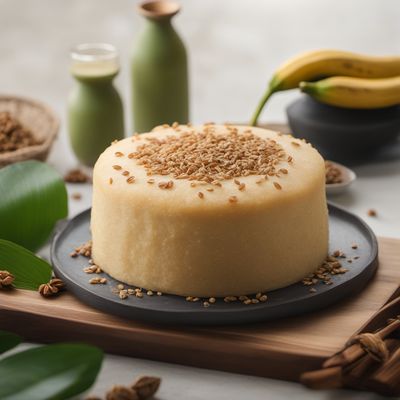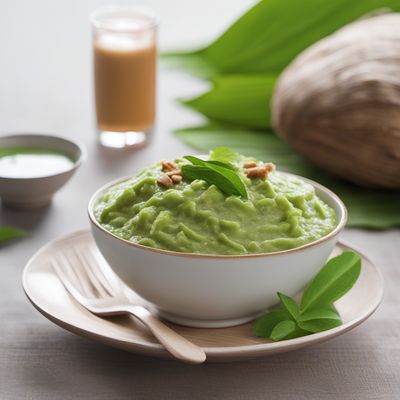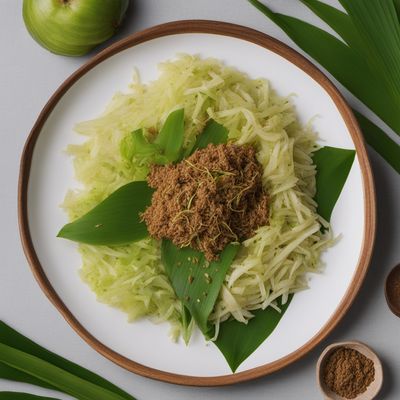
Ingredient
Swiss pine nut kernels
The Delicate Gems of the Swiss Alps
Swiss pine nut kernels are ivory-colored seeds that are small in size, measuring about 1 centimeter in length. They have a delicate, buttery flavor with a hint of resinous notes. The texture is creamy and slightly crunchy, providing a pleasant contrast in various culinary preparations. These nuts are often used to enhance the taste and texture of dishes, adding a touch of richness and nuttiness.
Origins and history
Swiss pine nut kernels have a long history in the Swiss Alps, where they have been harvested for centuries. They are deeply rooted in Swiss culinary traditions and are often used in regional dishes such as Swiss pine nut cake and Swiss pine nut pesto. These kernels are also highly valued for their medicinal properties and have been used in traditional herbal remedies for their anti-inflammatory and antioxidant benefits.
Nutritional information
Swiss pine nut kernels are a good source of healthy fats, protein, and dietary fiber. They also contain essential minerals such as magnesium, phosphorus, and zinc. Additionally, they provide a good amount of vitamin E, which is known for its antioxidant properties.
Allergens
Swiss pine nut kernels may cause allergic reactions in individuals with tree nut allergies.
How to select
When selecting Swiss pine nut kernels, look for ones that are ivory in color and have a uniform shape and size. Avoid kernels that appear discolored, shriveled, or have a rancid smell. Opt for reputable brands or suppliers to ensure the highest quality.
Storage recommendations
To maintain the freshness and quality of Swiss pine nut kernels, store them in an airtight container in a cool, dry place. They can also be refrigerated to extend their shelf life. Avoid exposing them to heat or direct sunlight, as this can cause the nuts to turn rancid.
How to produce
Swiss pine trees can be grown from seeds or seedlings in suitable climates. They require well-drained soil and ample sunlight. However, it is important to note that Swiss pine trees take several years to mature and produce cones with pine nut kernels.
Preparation tips
Swiss pine nut kernels can be enjoyed raw as a snack or toasted to enhance their flavor. They are commonly used in baking, particularly in cakes, cookies, and pastries. These kernels also add a delightful crunch and nutty flavor to salads, pasta dishes, and vegetable stir-fries. Additionally, they can be ground into a fine powder and used as a coating for meats or as a thickening agent in sauces and soups.
Substitutions
Almonds can be used as a substitute for Swiss pine nut kernels, providing a similar creamy texture and nutty flavor. However, almonds have a slightly different taste profile.
Culinary uses
Swiss pine nut kernels are commonly used in Swiss cuisine, particularly in desserts such as Swiss pine nut cake and Swiss pine nut tart. They are also a popular ingredient in pesto sauces, adding a unique flavor to pasta dishes. In addition, these kernels are often incorporated into bread, cookies, and other baked goods for their rich, nutty taste.
Availability
Swiss pine nut kernels are primarily cultivated in the Swiss Alps, where the Swiss pine trees thrive in the mountainous regions. They are also found in other European countries such as Austria and Germany.
More ingredients from this category

Siberian dwarf pine nut kernels
The Tiny Nut with Big Flavor

Bhutan pine nut kernels
The Himalayan Nutty Treasure

Chilgoza pine nut kernels
The Nutty Delicacy: Chilgoza Pine Nut Kernels

Stone pine nut kernels
"The Delicate Delights of Stone Pine Nut Kernels"

Yunnan Pine nut kernels
"The Nutty Delight: Unveiling the Richness of Yunnan Pine Nut Kernels"

Korean pine nut kernels
"The Nutty Delight: Unveiling the Secrets of Korean Pine Nut Kernels"

Other pine nut kernels
The Hidden Gems of the Forest

Siberian pine nut kernels
"The Nutty Delicacy: Unveiling the Secrets of Siberian Pine Nut Kernels"
Recipes using Swiss pine nut kernels » Browse all

Crispy Thai Banana Fritters
Golden Delights: Crispy Thai Banana Fritters

Island Paradise Banana Bread
Tropical Delight Banana Bread

Steamed Banana Cake
A Delicate Delight: Steamed Banana Cake

Maasai-Inspired Sweet Delight
Savory Sweetness: A Maasai Twist on a Classic Dessert

Sudanese-style Stuffed Chicken in Banana Leaves
Savory Sudanese Chicken Delight

North Korean Cartola
Sweet and Savory Banana Delight

Kat-kat Banana with Lingonberry Sauce
Scandinavian Twist on Filipino Kat-kat Banana: Lingonberry Delight

Bilo-bilo with Coconut Cream
Coconut Delight: A Sweet and Chewy English Twist on Bilo-bilo

Bánh Tẻ - Vietnamese Sticky Rice Cakes
Savor the Delight of Vietnamese Sticky Rice Cakes

Grilled Fish in Banana Leaves
Savory Grilled Fish Delight

Barbadian Bostrengo
Tropical Delight Bostrengo: A Barbadian Twist on an Italian Classic

Vanuatu Laplap
Tropical Taro Delight